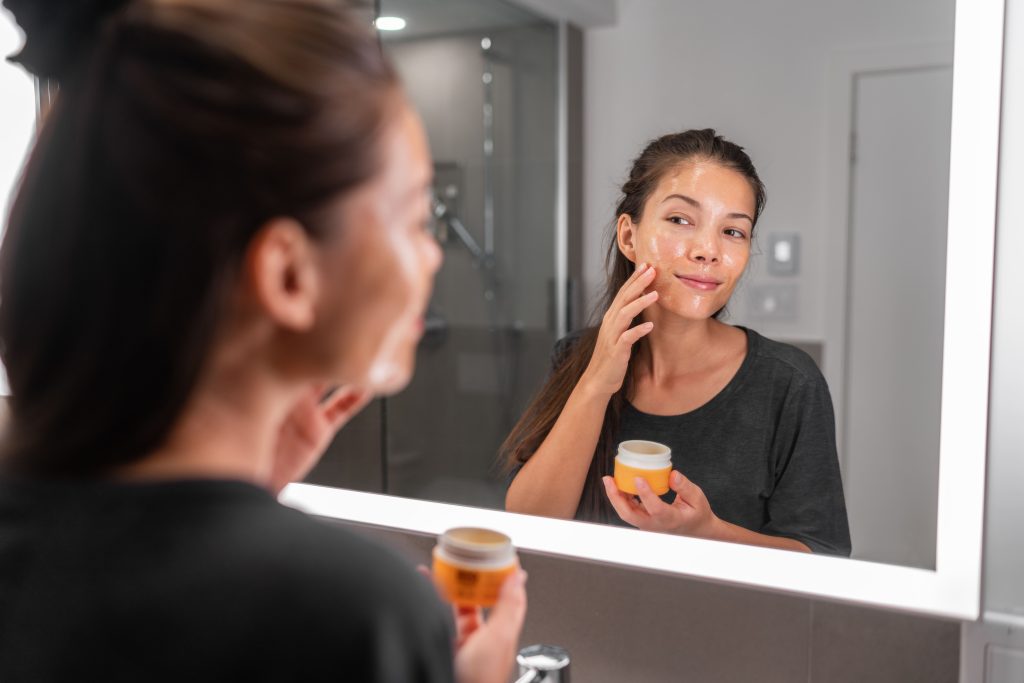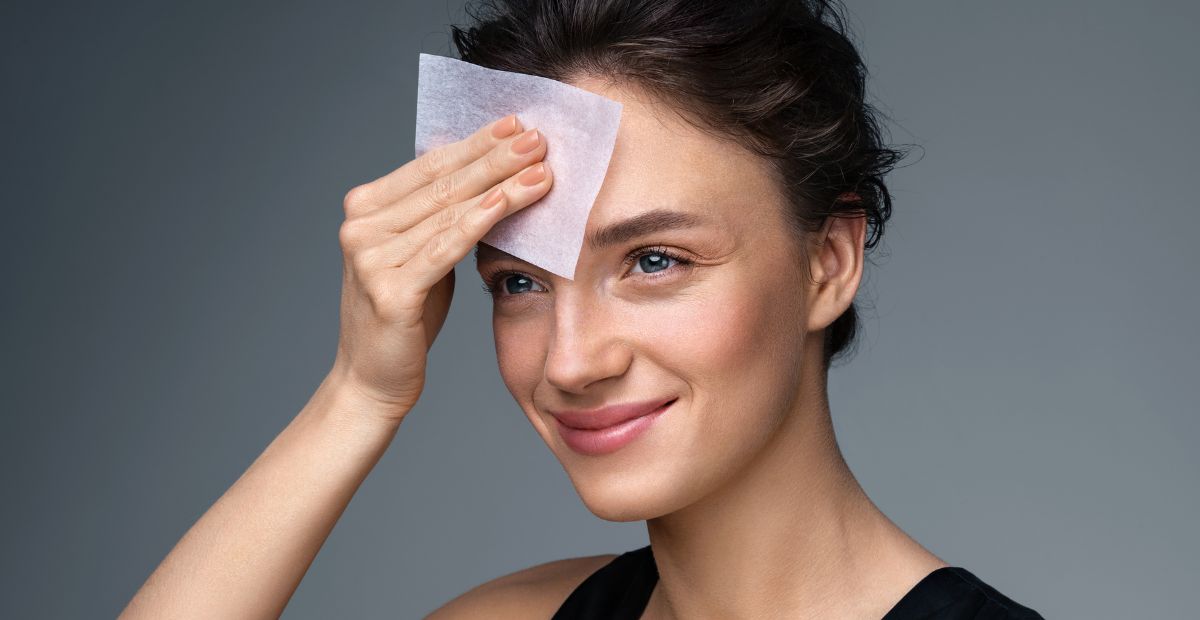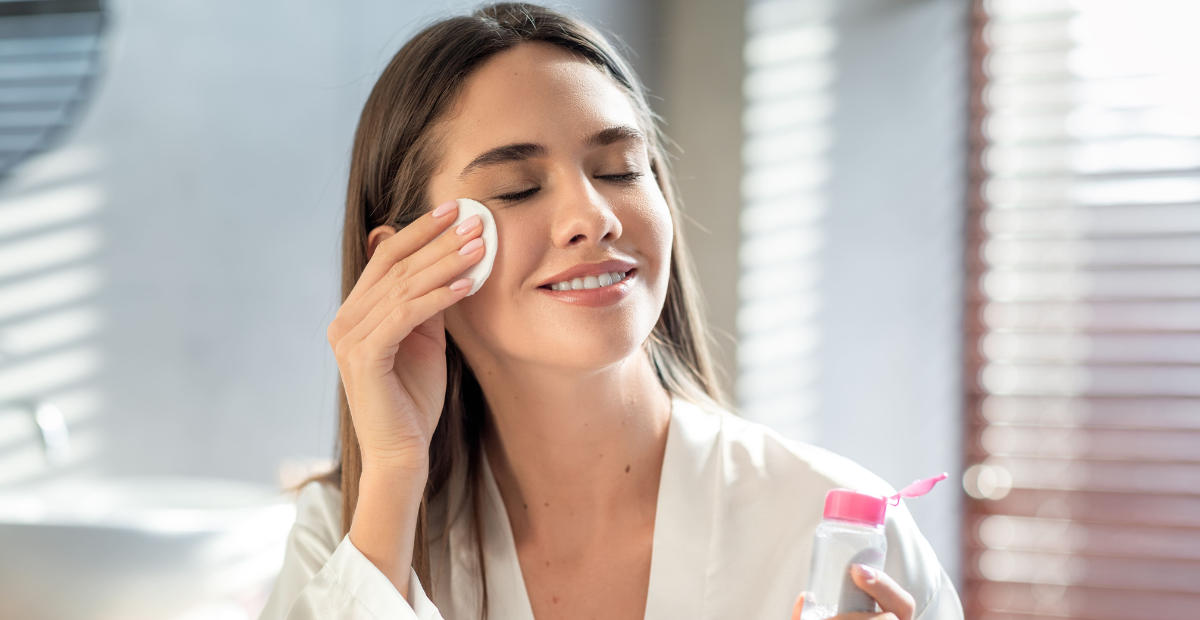Psoriasis vs. Eczema: The Great Debate
Onskin Content Team
Your guides through the skincare chaos

Psoriasis and eczema are two common but distinct skin conditions that can look (and sometimes feel) surprisingly similar. Understanding the differences is key to treating each one effectively. In this guide, we’ll learn how to tell them apart, manage them, and which ingredients to look for in skincare.
And no matter the diagnosis, don’t forget: the OnSkin app can help you decode every ingredient before it touches your skin.
What Is Psoriasis?
To get the difference, let’s start with the basics.
Psoriasis is a chronic inflammatory condition triggered by an overactive immune system. It makes the skin renew itself too quickly, leading to a build up on the surface. As a result, red patches called plaques appear on the skin, often topped with silvery scales. These patches commonly show up on the elbows, knees, scalp, and lower back, and sometimes even affect the nails, joints, or eyelids. According to a 2021 study, around 7.5 million American adults aged 20 and older have psoriasis, which makes it one of the most common immune-related diseases in the US. And basically, it can affect anyone.

At the same time, psoriasis is more than just a skin condition. It can also seriously impact the way people feel. This disease is often associated with social stigma, pain, discomfort, physical limitations, and emotional distress, all of which can significantly affect the quality of life.
We still don’t know exactly what causes psoriasis, but scientists believe it’s linked to a combination of genetic and environmental factors.
What Is Eczema?
Eczema, also known as atopic dermatitis, is a common long-term skin condition that causes dry, itchy skin. Actually, atopic dermatitis is one of the seven types of eczema, though it’s the most common. Still, the terms are often used interchangeably, even by scientists. So, to keep things simple, we’ll do the same.
Eczema is also often called “the itch that rashes” because scratching the skin makes the rash worse. In some cases, it may blister or even bleed.
The first description of the most common type of eczema we know today dates back to 1933. And yet, scientists still don’t know the exact causes of it. Like psoriasis, it’s believed to result from a mix of genetic and environmental factors.
Why Do People Confuse Psoriasis with Eczema?
Eczema and psoriasis are both chronic skin conditions that have some patterns:
- Both can look similar, though they have a number of differences.
- There’s no cure for either; only treatment is possible.
- Scientists are still unaware of their origin.
- Anyone can develop psoriasis or eczema.
- They can pass from generation to generation within a family.
- Neither condition is contagious.
But despite these similarities, psoriasis and eczema are different conditions.
Psoriasis vs. Eczema: Differences
First, there are certain distinctions in how they look. Eczema makes your skin red, swollen, and sometimes it can ooze or get crusty. The skin can feel rough or look leathery and may sometimes become darker. Psoriasis also causes red patches, but these usually have a thick layer of silvery scales on top. The affected skin is thicker and more inflamed than with eczema.
Second, they feel different. Eczema makes your skin itch a lot, sometimes so much that scratching can lead to bleeding. Psoriasis can also itch, but it often comes stinging or burning.
Third, these conditions usually start at different ages. Eczema affects about 15% to 30% of children and 2% to 10% of adults at some point in their lives. Psoriasis typically starts between the ages of 20 and 30 and often lasts for life.
Fourth, while both conditions can show up anywhere on the body, they tend to favor different areas. Eczema usually appears in the folds of the elbows and knees, and sometimes on the face, eyelids, and groin creases. Psoriasis, on the other hand, is most often located on the elbows, knees, and scalp.

NB! If you’re unsure which condition you have, the best thing you can do is consult a professional dermatologist. A skilled specialist can accurately diagnose the issue and recommend effective treatment.
How to Treat Psoriasis with Skincare
Skincare is a crucial part of managing psoriasis, especially for mild to moderate cases. A consistent daily routine, including moisturizers and topical treatments, can significantly improve symptoms and reduce flare-ups.
Look for products that contain the following ingredients:
- Emollients. They soothe dry, irritated skin and keep it hydrated, which supports the skin barrier. Emollients also relieve itchiness and reduce inflammation. You can read more about their types and effectiveness in our comprehensive guide.
- Resveratrol. One study on psoriasis showed that 80% of patients using resveratrol ointment improved, compared to only 10% who benefited without it.
- Salicylic acid, lactic acid, hypochlorous acid, or urea.
- Zinc. Known for its soothing properties, zinc is especially beneficial for inflammatory skin conditions.
- Centella Asiatica. One of its key components, madecassoside, is a powerful skin soother. In its purified form, it’s especially effective at reducing redness and irritation.
However, it’s important to understand that even if a product contains one of the ingredients mentioned above, it doesn’t mean it’s completely safe for you. Many products also include allergens or fragrances that aren’t suitable for treating psoriasis. To be 100% sure a product is safe, check it using the OnSkin app. It will analyze all the ingredients and let you know whether they’re safe and suitable for your skin type and concerns.
How to Treat Eczema with Skincare
Keeping your skin moisturized is a key factor. Use thick creams or ointments daily to repair your skin barrier, soothe irritation, and prevent dryness and itching. A gentle, personalized routine with mild cleansers, while avoiding common triggers like fragrances and harsh ingredients, can help reduce symptoms and keep flare-ups under control.

Many ingredients used to treat eczema are similar to those for psoriasis. These are emollients, zinc, urea, resveratrol, Centella Asiatica, and lactic acid. Vitamin D, vitamin E, dimethicone, and probiotics are also on the list.
The Final Diagnosis: Psoriasis vs. Eczema
Psoriasis and eczema have quite a few things in common and are often confused because of that. However, they’re distinct conditions with their own triggers, symptoms, and treatments. They often look, feel, start, and show up differently.
Both psoriasis and eczema require ongoing care and personalized skincare routines. If you’re unsure which condition you have, the best first step is to talk to a dermatologist. With the right guidance, both can be managed effectively, so your skin and mind stay calm.
FAQ
-
Where do I start with OnSkin?
Download the app and think of a product you’d like to know more about. Then, go to the main screen and choose how you’d like to get the info —by manually looking it up in the search bar, by scanning its barcode, or by simply taking a picture of the packaging. Once you’ve done any of these, you can see how safe the product is and if it suits your skin or hair (if this analysis is available).
-
What is Safety Rating, and how is it calculated?
In OnSkin, we base product rates on ingredients. Each is closely studied by our medical team and then evaluated. This way, each product gets a score from 0 to 100, with 100 as the safest level.
Safety Levels
- Excellent (76–100)
- Good (51–75)
- Not great (26–50)
- Bad (0–25)
These scores are backed by the latest scientific studies. You can find links to the resources we’ve used on each ingredient page. To assess the safety of product ingredients, we evaluate them according to the following parameters/criteria
- Endocrine disruption risk / Reproductive toxicity
Indicates the probability of mimicking, blocking, or interfering with the body hormones.
- Сarcinogenicity
Measures the potential risk of inducing cancer.
- Allergy risk
Estimates the probability of an allergic reaction.
- High concentration alert
Determines the risk of being unsafe in certain amounts.
-
What is Skin Match?
Based on the info you input about your skin type, age, skin care goal, and other “settings,” OnSkin checks how well a product is tailored to your unique skin needs — it’s basically like a dermatologist helping you find the right products, minus the fees and the long wait. The product you’re checking might be labeled as It’s a match!, Hit-or-miss, or Not a match for you. The app also detects ingredient groups such as Anti-acne, Anti-inflammatory, Moisturizes, May be drying, Comedogenic, and others — by tapping one, you see exactly what ingredients from this or that group are in the product.
-
I seem to have a problem with using the app. Who should I contact?
Please reach out to us at [email protected], and we’ll carefully look into your issue. Your ideas for improving the app are also very welcome!
-
Do you have an Android version?
Not yet! Hey Android users, we hear you, and we're thinking about making an Android version, but we haven't started the development yet.
Tracker Sent!
It’s on the way to your inbox.




